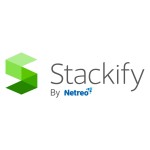In today’s complex and distributed software environments, achieving full observability is crucial for ensuring the performance and reliability of applications. OpenTelemetry, an open-source observability framework, has emerged as a powerful tool for monitoring and tracing. This guide will explore OpenTelemetry monitoring, Python instrumentation, and integrating OpenTelemetry with React applications.
Understanding OpenTelemetry Monitoring
What is OpenTelemetry?
OpenTelemetry is an open-source project that provides a set of APIs, libraries, agents, and instrumentation tools to collect telemetry data (traces, metrics, and logs) from your applications. It supports multiple programming languages and is designed to work with a variety of back-end observability platforms.
Importance of OpenTelemetry Monitoring
OpenTelemetry monitoring enables you to gain deep insights into your application's performance and health. By collecting and analyzing telemetry data, you can:
- Identify performance bottlenecks: Detect slow components and optimize them for better performance.
- Track dependencies: Understand the interactions between various microservices and external dependencies.
- Diagnose issues: Quickly pinpoint the root cause of errors and failures.
- Ensure reliability: Monitor service-level objectives (SLOs) and ensure your application meets performance and availability targets.
Key Components of OpenTelemetry Monitoring
- Traces: Capture the end-to-end flow of requests through your application. Traces help you understand the path of a request and identify latency issues.
- Metrics: Collect quantitative data such as CPU usage, memory consumption, request rates, and error rates. Metrics provide a high-level view of your application's performance.
- Logs: Record detailed information about events that occur within your application. Logs are useful for debugging and troubleshooting.
Python Instrumentation with OpenTelemetry
Setting Up OpenTelemetry in Python
Instrumenting a Python application with OpenTelemetry involves the following steps:
- Install OpenTelemetry SDK and Instrumentation Libraries:
pip install opentelemetry-api
pip install opentelemetry-sdk
pip install opentelemetry-instrumentation
Initialize OpenTelemetry: python
from opentelemetry import trace
from opentelemetry.sdk.trace import TracerProvider
from opentelemetry.sdk.trace.export import BatchSpanProcessor, ConsoleSpanExporter
# Set up the tracer provider
trace.set_tracer_provider(TracerProvider())
# Create a tracer
tracer = trace.get_tracer(__name__)
# Configure the exporter and add it to the span processor
span_processor = BatchSpanProcessor(ConsoleSpanExporter())
trace.get_tracer_provider().add_span_processor(span_processor)
- Instrument Your Code: python
with tracer.start_as_current_span("main-operation"):
# Your application logic here
with tracer.start_as_current_span("nested-operation"):
# Nested operation logic here
Use Automatic Instrumentation:
- OpenTelemetry provides automatic instrumentation for popular frameworks and libraries.
pip install opentelemetry-instrumentation-flask python
from opentelemetry.instrumentation.flask import FlaskInstrumentor
from flask import Flask
app = Flask(__name__)
FlaskInstrumentor().instrument_app(app)
@app.route('/')
def hello():
return "Hello, OpenTelemetry!"
if __name__ == "__main__":
app.run()
Benefits of Python Instrumentation
- Visibility: Gain comprehensive visibility into the execution flow of your Python applications.
- Performance Optimization: Identify and optimize slow code paths.
- Error Detection: Quickly detect and diagnose errors and exceptions.
- Resource Utilization: Monitor and optimize resource usage.
Integrating OpenTelemetry with React
Setting Up OpenTelemetry in React
Instrumenting a React application with OpenTelemetry involves integrating the OpenTelemetry JavaScript libraries.
#1. Install OpenTelemetry Libraries:
npm install @opentelemetry/api
npm install @opentelemetry/sdk-trace-web
npm install @opentelemetry/instrumentation-fetch
npm install @opentelemetry/instrumentation-document-load
npm install @opentelemetry/exporter-collector
#2. Initialize OpenTelemetry: javascript
import { WebTracerProvider } from '@opentelemetry/sdk-trace-web';
import { ConsoleSpanExporter, SimpleSpanProcessor } from '@opentelemetry/tracing';
import { FetchInstrumentation } from '@opentelemetry/instrumentation-fetch';
import { DocumentLoadInstrumentation } from '@opentelemetry/instrumentation-document-load';
import { CollectorTraceExporter } from '@opentelemetry/exporter-collector';
const provider = new WebTracerProvider();
// Configure exporter
const exporter = new CollectorTraceExporter({
url: 'http://localhost:55681/v1/traces'
});
// Add exporter to span processor
provider.addSpanProcessor(new SimpleSpanProcessor(exporter));
provider.addSpanProcessor(new SimpleSpanProcessor(new ConsoleSpanExporter()));
// Register the provider
provider.register();
// Instrument fetch and document load
new FetchInstrumentation().setTracerProvider(provider);
new DocumentLoadInstrumentation().setTracerProvider(provider);
#3. Instrument React Components:javascript
import { trace } from '@opentelemetry/api';
function App() {
const tracer = trace.getTracer('react-app');
const handleClick = () => {
const span = tracer.startSpan('button-click');
// Your application logic here
span.end();
};
return (
<div className="App">
<header className="App-header">
<button onClick={handleClick}>Click Me</button>
</header>
</div>
);
}
export default App;
Benefits of OpenTelemetry in React
- User Experience Insights: Track the user journey and interactions within your opentelemetry react application.
- Performance Monitoring: Measure and optimize the performance of your React components.
- Error Tracking: Detect and diagnose client-side errors.
- Comprehensive Observability: Gain a full-stack view of your application's performance, from the front-end to the back-end.
Best Practices for OpenTelemetry Monitoring
Consistent Instrumentation
Ensure consistent instrumentation across all components of your application. Use OpenTelemetry's automatic instrumentation libraries where possible to minimize manual effort and reduce the risk of missing critical instrumentation points.
Centralized Telemetry Data
Collect and store telemetry data in a centralized system. This enables you to correlate data from different sources and gain a holistic view of your application's performance. Tools like Jaeger, Zipkin, and Prometheus are commonly used for this purpose.
Regular Analysis and Optimization
Regularly analyze telemetry data to identify performance bottlenecks and optimize your application. Use dashboards and visualizations to monitor key metrics and trends. Set up alerts for critical issues to ensure prompt resolution.
Security and Privacy
Ensure that your instrumentation does not expose sensitive data. Use data masking and anonymization techniques to protect user privacy. Follow security best practices when configuring and managing your observability infrastructure.
Conclusion
OpenTelemetry provides a robust framework for achieving comprehensive observability in modern applications. By implementing OpenTelemetry monitoring, you can gain deep insights into your application's performance and health. Python instrumentation applications and React components with OpenTelemetry enables you to track the execution flow, measure performance, and diagnose issues effectively.
Following best practices for consistent instrumentation, centralized telemetry data collection, regular analysis, and maintaining security and privacy will help you maximize the benefits of OpenTelemetry. Embrace OpenTelemetry to enhance the reliability, performance, and user experience of your applications in today’s complex and distributed software environments.






Comments